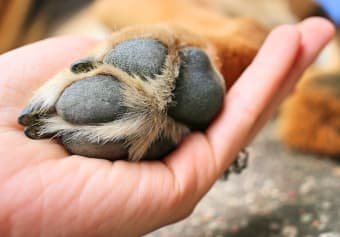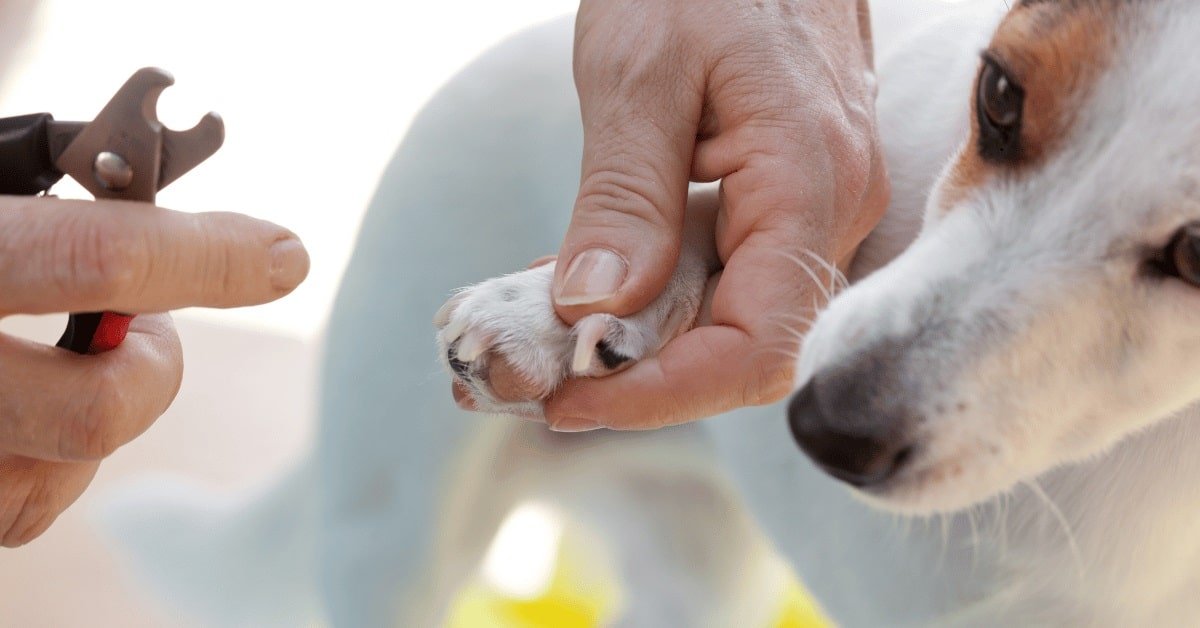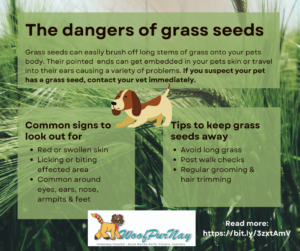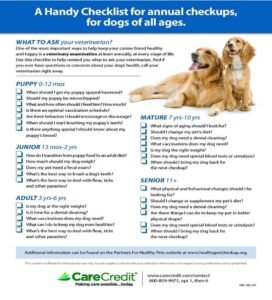Clean the cut with mild antiseptic and apply a dog-safe antibiotic ointment. Bandage the paw to prevent infection. So let jump in deep: How to Treat Cut on Dog Paw?
Dog paw injuries are common and can be distressing for both the pet and the owner. Prompt treatment is essential to prevent complications and ensure a quick recovery. Cleaning the wound thoroughly helps to remove any debris or bacteria. Applying an antibiotic ointment aids in preventing infections.
Bandaging the paw keeps the wound clean and protected. Regularly check the bandage and change it as needed to maintain hygiene. If the cut seems severe or doesn’t heal, consult a veterinarian for professional advice. Taking swift and proper action ensures your dog stays healthy and comfortable.
Table of Contents
Assessing The Injury
When your dog hurts its paw, you must act quickly. Assessing the injury is the first step. This ensures you give your pet the best care. Below, learn how to examine the cut and identify its severity.
Examine The Cut
First, calm your dog. This helps you inspect the paw easily. Use a soft cloth to clean the area. This makes the cut visible. Look for dirt, debris, or foreign objects. These can cause infections if left untreated.
Next, check the size and depth of the cut. Small cuts are usually less serious. Deep cuts may need veterinary care. Also, note if there is bleeding. Heavy bleeding is a sign of a severe injury.
Identify Severity
To identify the severity, use these guidelines:
- Minor Cut: Small, shallow, and stops bleeding quickly.
- Moderate Cut: Larger, deeper, with some bleeding.
- Severe Cut: Very deep, heavy bleeding, or exposing bone or tissue.
If you see swelling, redness, or pus, the cut may be infected. An infected cut needs a vet’s attention. Use this table to help you determine the next steps:
| Severity | Action |
|---|---|
| Minor | Clean, apply antiseptic, and bandage. |
| Moderate | Clean, apply antiseptic, bandage, and monitor. |
| Severe | Seek veterinary care immediately. |
Remember to keep your dog calm and still during the assessment. This makes the process easier and reduces stress for your pet.
Immediate Actions
When your dog gets a cut on their paw, acting quickly is crucial. Immediate actions can prevent infection and promote healing. Follow these steps to ensure your dog’s paw heals properly.
Clean The Wound
First, rinse the cut with clean water. This removes dirt and debris. Use a mild antiseptic to clean the wound thoroughly.
For more stubborn dirt, use a clean cloth or gauze. Gently wipe the area, avoiding rubbing harshly.
Consider using a saline solution. It is gentle and effective in cleaning wounds.
Stop The Bleeding
Apply gentle pressure to the cut with a clean cloth. This helps to stop the bleeding.
If the bleeding persists, elevate the paw. This can reduce blood flow to the area.
Using a styptic powder can also help. It is designed to stop minor bleeding quickly.
If the bleeding does not stop after 10 minutes, seek veterinary assistance. Persistent bleeding needs professional care.
Taking immediate actions can make a huge difference. Ensure you clean the wound and stop the bleeding promptly.
Essential First Aid Supplies
Treating a cut on your dog’s paw requires the right first aid supplies. Having these essentials can make the process smoother and safer for your pet.
Bandages And Dressings
Bandages and dressings are crucial for protecting your dog’s wound. Use sterile gauze pads to cover the cut. Ensure they are large enough to cover the entire wound.
- Sterile Gauze Pads: Prevents infection and absorbs blood.
- Self-Adhesive Bandages: Keeps the gauze in place without sticking to the fur.
- Non-Stick Pads: Ideal for sensitive wounds.
Wrap the paw with a self-adhesive bandage. This keeps the gauze pad secure. Avoid wrapping too tightly. This can restrict blood flow.
Antiseptic Solutions
Antiseptic solutions are essential for cleaning the wound. They help prevent infections and promote healing. Use solutions safe for dogs.
- Chlorhexidine Solution: Effective and gentle on the skin.
- Povidone-Iodine Solution: A broad-spectrum antiseptic.
Clean the cut with an antiseptic solution. Use a clean cloth or cotton ball. Dab gently to remove dirt and bacteria.
Proper Wound Cleaning
Cleaning your dog’s paw wound properly is crucial. It helps prevent infections and ensures faster healing. Follow these steps to keep your dog’s paw clean and healthy.
Rinsing Techniques
First, rinse the wound with lukewarm water. Use a gentle stream of water. Avoid using high pressure. This helps remove dirt and debris from the wound. It’s important to be gentle to avoid causing pain.
- Use lukewarm water
- Gentle water stream
- Remove dirt and debris
Using Antiseptics
After rinsing, apply an antiseptic solution to the wound. Antiseptics help kill bacteria and prevent infection. Use a clean cotton ball or gauze to apply the antiseptic. Be sure to cover the entire wound area.
- Apply antiseptic solution
- Use clean cotton ball or gauze
- Cover the entire wound area
Repeat the cleaning process daily. This ensures the wound stays clean and free from infection. Proper cleaning is essential for your dog’s quick recovery.

Photo: credit: https://www.berkeleydogandcat.com/site/home
Applying Bandages
Applying a bandage to your dog’s paw cut is essential. It helps protect the wound from dirt and infections. Here’s a guide to help you through this process.
Types Of Bandages
There are several types of bandages you can use for your dog’s paw:
- Gauze Pads: Soft and absorbent, ideal for covering the wound.
- Self-Adhesive Wraps: These wraps stick to themselves, not your dog’s fur.
- Vet Wraps: Flexible and breathable, providing good support.
- Adhesive Bandages: Secure and waterproof but may stick to fur.
Securing The Dressing
Once you’ve chosen the right bandage, it’s time to secure it:
- Clean the Wound: Use a mild antiseptic solution to clean the cut.
- Apply Gauze Pad: Place a sterile gauze pad directly over the cut.
- Wrap with Vet Wrap: Wrap the paw gently with vet wrap, avoiding tightness.
- Secure with Tape: Use medical tape to secure the bandage, if needed.
Check the bandage daily to ensure it stays clean and dry. Your dog’s paw will heal faster if the dressing is properly applied and maintained.
| Bandage Type | Features |
|---|---|
| Gauze Pads | Soft, absorbent, good for covering wounds |
| Self-Adhesive Wraps | Sticks to itself, not to fur |
| Vet Wraps | Flexible, breathable, supportive |
| Adhesive Bandages | Waterproof, secure but may stick to fur |
Monitoring The Healing Process
After treating a cut on your dog’s paw, monitoring the healing process is crucial. Keeping a close eye on the wound ensures it heals properly. It also helps you detect any complications early.
Checking For Infection
Regularly check the wound for signs of infection. An infected wound can slow down the healing process and cause further complications.
- Redness around the cut
- Swelling or puffiness
- Foul-smelling discharge
- Increased warmth
- Your dog licking the wound excessively
If you notice any of these signs, contact your vet immediately. Early treatment can prevent serious issues.
Signs Of Healing
Recognizing the signs of healing helps you understand if the treatment is working. Look for these indicators:
- Scabbing over the wound
- Reduced redness and swelling
- Less discharge
- Your dog seems less bothered by the cut
Ensure you keep the wound clean and dry. Regularly change any bandages to avoid infections.
By monitoring these signs, you can ensure your dog’s paw heals quickly and properly.
When To Seek Veterinary Help
Sometimes, a cut on your dog’s paw may need professional care. Knowing when to seek veterinary help can save your dog from complications. Here are key signs you should watch for.
Persistent Bleeding
If your dog’s paw cut keeps bleeding for more than 10 minutes, it’s time to see the vet. Blood loss can weaken your dog and cause more problems.
Use a clean cloth to press on the wound. If the bleeding doesn’t stop, call your vet immediately.
Also, if the blood flow is heavy, it might mean a deeper cut. This needs medical attention right away.
Signs Of Infection
Watch for signs of infection in your dog’s paw. These include:
- Redness around the cut
- Swelling of the paw
- Pus or discharge from the wound
- Bad smell from the cut
- Your dog licking the wound constantly
If you see any of these signs, visit the vet. An infected cut can spread and cause more issues.
To help your vet, keep a record of your dog’s symptoms. Note down when you first saw them and if they got worse.
Preventing Future Injuries
Ensuring your dog’s paws remain injury-free is crucial for their overall health. Preventing future injuries not only saves you from worry but also keeps your furry friend happy. Here are some effective ways to protect your dog’s paws.
Paw Protection Gear
Investing in paw protection gear can greatly reduce the risk of injuries. Consider using dog boots or paw wax to safeguard your dog’s paws from rough terrains and extreme temperatures.
- Dog Boots: These provide a protective barrier against sharp objects and hot pavements.
- Paw Wax: This forms a protective coating on the paws, preventing cuts and burns.
Safe Play Areas
Choosing safe play areas is essential to prevent cuts and injuries. Ensure the play area is free from sharp objects, broken glass, and harmful chemicals.
Here are some tips for selecting safe play areas:
- Inspect the area for hazardous objects.
- Avoid areas with broken glass or sharp stones.
- Ensure the ground is not too hot or cold.
- Choose grassy or sandy surfaces for play.
By using paw protection gear and selecting safe play areas, you can effectively prevent future injuries. This keeps your dog happy and healthy.
Frequently Asked Questions
How Do I Clean A Cut On My Dog’s Paw?
Clean the cut gently with mild soap and water. Use a clean cloth to remove debris. Rinse thoroughly and pat dry.
What Can I Put On My Dog’s Paw Cut?
Apply an antiseptic solution or antibiotic ointment. Avoid products with alcohol or hydrogen peroxide. Consult your vet for recommendations.
When Should I See A Vet For A Paw Cut?
Visit a vet if the cut is deep, bleeding heavily, or shows signs of infection like redness or swelling.
How Can I Prevent My Dog From Licking The Cut?
Use an Elizabethan collar (E-collar) or a dog bootie to prevent licking. Distraction techniques and supervision can also help.
Conclusion
Caring for a cut on your dog’s paw is crucial. Clean the wound, apply antiseptic, and bandage it properly. Monitor the healing process and consult a vet if needed. With these steps, your furry friend will be back to normal soon.
Keep an eye on their paws to prevent future injuries.



